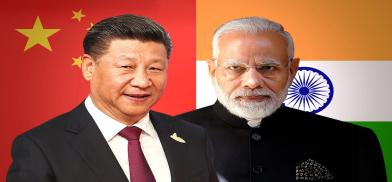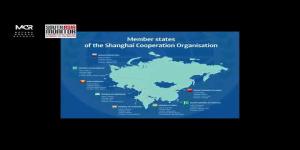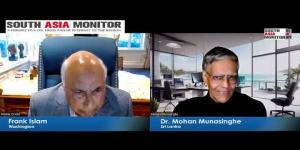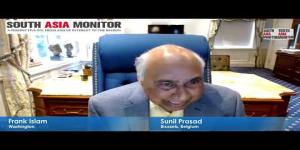The Tianjin Calculus: Modi, Xi, and the Unfinished Chapter of the 21st Century
The most probable outcome in Tianjin is what one Indian diplomat called a “tactical pause.” A cooling of tensions, a resumption of some economic and security dialogues, perhaps even a roadmap for regular high-level contact. That would be enough to stabilise the border and signal to Washington that India has options.

In April 1955, at the Bandung Conference in Indonesia, leaders from newly independent Asian and African states gathered to imagine a world outside the Cold War binary. Among them were Indian Prime Minister Jawaharlal Nehru and Chinese Premier Zhou Enlai, two men who then spoke the language of a “third force” between the superpowers. They shook hands, smiled for the cameras, and signed on to the spirit of “Panchsheel”— five principles of peaceful coexistence.
Seven-and-a-half years later, Chinese troops poured across the Himalayas. Whatever Bandung had promised dissolved in the snow-laden battlefield of 1962.
The war redrew the map of India’s foreign policy, welding a reflexive suspicion of China into the country’s strategic DNA. Even today, when questioned, Indian strategists will say the “real enemy” is across the northern border and Pakistan a mere distraction.
Since then, the triangle connecting New Delhi, Beijing, and Washington has shifted shape more than once. In the 1970s, India tilted toward Moscow; by the 1990s, toward the United States.
In between, China rose from poverty to become the world’s second-largest economy, and the U.S.–India “strategic partnership” was cast as a bulwark against that new found strength of Beijing’s rise.
Changing Equations, Seminal Summit
However, fast forward to 2025, the equation is changing again — and Tianjin may be the point where the lines start to bend. At the end of August, Narendra Modi and Xi Jinping will meet in the northern Chinese port city of Tianjin, their first substantial face-to-face since the Galwan Valley clash of 2020.
When Indian and Chinese soldiers clashed in close quarters with improvised weapons in an incident that killed soldiers on both sides and froze bilateral relations for half a decade.
Officially, the latest encounter is about “normalising” relations after partial troop disengagement along the contested Line of Actual Control.
But no one in Beijing, New Delhi, or Washington believes the agenda will stop at just high-altitude patrol routes.
In the background is a much larger question: Can the dragon and the elephant find enough common rhythm to dance, even briefly, in a multipolar order that is already under construction?
Twin Shadows Over Tianjin
Tianjin will be held under the shadow of not only Galwan but also India’s history of clashes with Communist China in the past. The brief but deadly war of 1962 and the pushback in 1967 at the Nathu La Pass will remain touchstones in the national narrative: moments when the Himalayan frontier went from remote abstraction to violent reckoning.
The other big shadow which will be on everyone’s mind will be that of the tariffs unleashed by US President Donald Trump.
In late July, Trump imposed punitive tariffs on $86.5 billion of Indian exports, effectively doubling the rate to 50 percent. Officially, the move was punishment for India’s refusal to halt purchases of discounted Russian oil.
Unofficially, it was also a major setback for Prime Minister Modi, who had invested years, and much political capital, cultivating a personal “bromance” with Trump, even to the extent of campaigning for him on American soil.
The rift deepened when Trump offered preferential trade terms to Pakistan just weeks after a major terror attack in Kashmir.
For South Block, the home of India’s Ministry of External Affairs, the message seemed unambiguous: Washington’s affection can be transactional, and its pressure unsubtle.
In Indian political circles, the episode revived an old anxiety that has haunted foreign policy since Nehru’s time: that over-dependence on a single great power which could eventually lead to a rude awakening.
In the 1970s it was the Soviet Union with which India signed a treaty just before the 1971 war with Pakistan which helped liberate Bangladesh. This treaty and the pro-Soviet tilt ended with collapse of the Soviet empire, leaving India to face a unipolar world at its own terms.
In this century India has increasingly tilted towards the United States with which New Delhi under various governments signed a series of military and nuclear pacts. These pacts and the more recent Quad arrangement were seen by Beijing as alarming and possibly viewed by Moscow as a marked drift away from it.
However, at the same time, India’s refusal to commit itself to a declared anti-China security alliance and its attempts to sit on the fence much the way Turkey had done during the Second World War caused significant irritation in Washington.
No one expects Modi and Xi to resolve their countries’ most intractable disputes in a single meeting. But a few concrete possibilities are in play.
One is a no-war understanding—short of a formal treaty, but beyond the current 1993 Peace and Tranquility accord. Such a step would require a verification regime: satellite monitoring, regular military commander-level meetings, and institutionalised crisis hotlines.
The goal would not be trust, an elusive commodity between New Delhi and Beijing, but predictability.
Another is economic reopening. Since 2020, Chinese investment in India has been largely frozen under national security red flags. Even direct flights stopped during Covid were not allowed to be restarted.
Reviving stalled dialogues between India’s NITI Aayog and China’s top planning bodies could unlock cooperation in artificial intelligence, advanced manufacturing, green transportation, and WTO reform.
For New Delhi, there’s also a more immediate prize: Chinese cooperation in securing rare earth supplies, critical to India’s ambitions in electric vehicles, semiconductors, and renewable energy.
However, Indian mandarins have to understand that China has its own list. It would want greater access to Indian data markets, a public disavowal of any Tibetan-led succession plan for the Dalai Lama, and neutrality on the South China Sea.
These asks are politically radioactive in India; even small concessions could provoke a domestic backlash — especially in the run-up to the 2026 general elections, where Modi’s nationalist credentials will be scrutinised as much as his economic record.
Strategic Logic—And the Obstacles
The logic for at least a partial thaw is compelling. Both India and China are pillars of BRICS+, the Shanghai Cooperation Organisation, and the G20.
Both maintain durable ties with Russia, which remains central to any Eurasian balance of power. Both see themselves as leaders of the Global South, challenging the dominance of Western-led institutions.
Yet the asymmetry is also clear. China’s economic weight in much of the developing world is unmatched; India’s influence is more political and cultural than economic.
For Beijing, India’s growing defence cooperation with the United States and participation in the Quad, nominally about maritime security but implicitly about containing China, remains a red flag. For New Delhi, Chinese support for Pakistan and the memory of Galwan are not easily compartmentalised.
In this, Tianjin echoes an earlier moment: Atal Bihari Vajpayee’s visit to Beijing in 2003, which produced warmer rhetoric and new frameworks but left the boundary dispute essentially untouched.
Then, as now, India sought economic engagement without strategic dependency; China sought political stability without giving ground on core territorial claims.
The most probable outcome in Tianjin is what one Indian diplomat called a “tactical pause.” A cooling of tensions, a resumption of some economic and security dialogues, perhaps even a roadmap for regular high-level contact. That would be enough to stabilise the border and signal to Washington that India has options.
All concerned have to however understand that deeper strategic realignment would require more than a few hours in a conference room.
It would require India to bet that Beijing’s rise is compatible with its own. And that China’s version of a multipolar order leaves real space for peers, not just subordinates.
The irony is that Trump’s tariff barrage may do more to test that hypothesis than any speech in Tianjin.
If US-India relations continue to sour, the gravitational pull of Eurasian alternatives, led by Beijing and Moscow, may well grow stronger.
In Bandung seventy years ago, Nehru and Zhou promised that Asia would speak for itself.
That dream collapsed in the scree of the Himalayas, replaced by decades of suspicion and intermittent hostility.
Yet the impulse behind it, the idea that two great Asian civilisations might coexist without one subordinating itself to the other, never quite died.
A Quieter Inflection Point?
Tianjin will not resurrect Bandung. It will not erase Galwan, or redraw the LAC, or remove the shadow of Washington from New Delhi’s calculations.
But it could mark a quieter inflection point: the moment when India and China, without illusions of brotherhood, decide that friction is less costly than confrontation, and that the next chapter of the Asian century can still be written in ink rather than blood.
If that happens, history may remember Tianjin not for what it solved, but for what it postponed, and for the doors it left open.
(The author is a senior journalist and strategic analyst who specialises in the political economy. Views expressed are personal)










Post a Comment